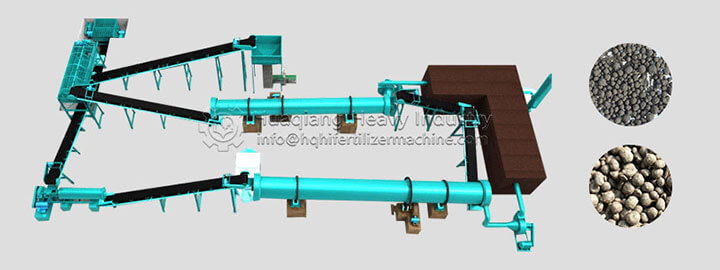Amidst the wave of agricultural modernization, bio-organic fertilizer production lines are becoming a key pillar in promoting green development, attracting considerable attention with their unique advantages and broad prospects.

From a market perspective, with rising consumer health awareness, the demand for green and organic agricultural products has exploded. As a key input for producing high-quality agricultural products, bio-organic fertilizers can improve soil structure, enhance fertility, promote healthy crop growth, and reduce chemical residues, creating a widening market gap.
Technological advances are empowering bio-organic fertilizer production lines. Today, advanced microbial fermentation technologies are constantly evolving, enabling precise control of the fermentation process, improving bacterial activity and fertilizer conversion rates. Equipment is becoming increasingly intelligent, automating the entire process from raw material pretreatment, fermentation, granulation, and packaging. This significantly improves production efficiency, reduces labor costs, and ensures consistent product quality.
The rise of bio-organic fertilizer production lines has driven the development of related industries, creating a virtuous cycle. Organic waste, such as crop straw and livestock manure, is being repurposed as a resource, addressing environmental pollution challenges. Each ton of organic fertilizer consumes five tons of agricultural waste, and production lines with annual processing capacities exceeding 10 million tons are now common.
From a broader perspective, the penetration of bio-organic fertilizers in fruit and vegetable cultivation, tea cultivation, and traditional Chinese medicine cultivation is rapidly increasing. In protected agriculture, bio-organic fertilizers can reduce the effects of continuous cropping and increase greenhouse crop yields by 10%-15%. Ecological planting bases utilize bio-organic fertilizers as a core investment, building an organic chain from "soil to table," creating significant potential for product premiums.
Although the current bio-organic fertilizer market faces challenges such as uneven product quality and difficulty in market promotion, these issues will gradually be addressed with stricter regulation, widespread technical support, and in-depth market education. It is foreseeable that bio-organic fertilizer production lines will play an increasingly important role in green agriculture, becoming a key driver of sustainable agricultural development and leading the industry to new heights.